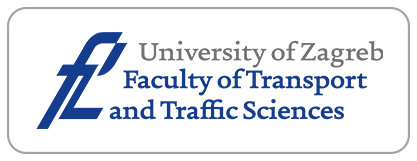Dynamic Interactions between Commuters’ Mode Choice Behaviour and Integrated Traveller Information

Downloads
A commuter’s mode choice decision in response to provided traveller information is directly dependent on the temporal and spatial interactions between the available travel modes, the network performance and control schemes, and the supplied traveller information. A self-developed simulation model – Intelligent Network Simulation Model (INSIM) – was employed to simulate travel scenarios in a multimodal transportation network. A set of experiments was designed to analyse and evaluate the influence of traffic information on commuter’s mode choice, using a medium-sized area in Singapore. Simulation results showed that the private-to-public mode switch propensity bears a strong and direct relation with amount of disseminated integrated multimodal traveller information (IMTI) as well as timeliness of information update. Other influential factors include degrees of accessibility and compliance to IMTI, and congestion-related events such as accidents.
Downloads
Bekhor S, Dobler C, Axhausen KW. Integration of activity-based and agent-based models. Transportation Research Record: Journal of the Transportation Research Board. 2011;2255:38-47.
Kenyon S, Lyons G. The value of integrated multimodal traveller information and its potential contribution to modal change. Transportation Research Part F: Traffic Psychology and Behaviour. 2003;6(1):1-21.
Märki F, Charypar D, Axhausen KW. Continuous activity planning for continuous traffic simulation. Transportation Research Record: Journal of the Transportation Research Board. 2011;2230:29-37.
Wang W, Zhang W, Guo H, Bubb H, Ikeuchi K. A safety-based approaching behavioural model with various driving characteristics. Transportation Research Part C. 2011;19(6):1202-1214.
Dia H. An agent-based approach to modelling driver route choice behaviour under the influence of real-time information. Transportation Research Part C. 2002;10(5):331-349.
Kenyon S, Lyons G. The value of integrated multimodal traveller information and its potential contribution to modal change. Transportation Research Part F. 2003;6(1):1-21.
Ben-Elia E, Shiftan Y. Which road do I take? A learning-based model of route-choice behavior with real-time information. Transportation Research Part A. 2010;44(4):249-264.
Chorus CG, Molin EJE, Van Wee B. Use and effects of Advanced Traveller Information Services (ATIS): a review of the literature. Transport Reviews. 2006;26(2):127-149.
Van Aerde M, Hellinga B, Baker M, Rakha H. INTEGRATION: An overview of traffic simulation features. Presented at 75th Annual Meeting of the Transportation Research Board. Washington DC; 1996.
Wang PT, Glassco RA. Enhanced THOREAU traffic simulation for intelligent transportation systems (ITS). In: Proceedings of the 27th Conference on Winter Simulation. IEEE Computer Society, 1995; p. 1110-1115.
Jayakrishnan R, Oh JS, Sahraoui AEK. Calibration and path dynamics issues in microscopic simulation for advanced traffic management and information systems. Transportation Research Record: Journal of the Transportation Research Board. 2001;1771(1):9-17.
Barceló J, Ferrer JL, Grau R. A route based variant of the AIMSUN2 microsimulation model. Proceedings of the Steps Forward – Intelligent Transport Systems World Congress, Volume 4; 1995 Nov 9-11; Yokohama, Japan; 1995.
Cameron GD, Duncan GI. PARAMICS – Parallel microscopic simulation of road traffic. The Journal of Supercomputing. 1996;10(1):25-53.
Nakajima Y, Yamane S, Hattori H. Multi-model based simulation platform for urban traffic simulation. Principles and Practice of Multi-Agent Systems. Springer Berlin Heidelberg, 2012; p. 228-241.
Meng M, Shao CF, Zeng JJ, Dong CJ. A simulation-based dynamic traffic assignment model with combined modes. PROMET – Traffic & Transportation. 2014;26(1):65-73.
Memon AA, Meng M, Wong YD, Lam SH. Rule-based mode choice model – INSIM expert system. Journal of Transportation Engineering – ASCE. 2015;141(4):04014088.
Lam SH, Memon AA. Development of an intelligent traffic simulation model (INSIM) for evaluating the effects of multi-modal traveller information. Publication of: ARRB Transport Research, Limited; 2003.




















